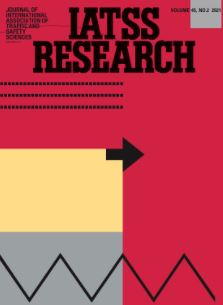
The Internet of Things (IoT) constantly offers new opportunities and features to monitor and analyze driver behavior through wide use of smartphones, effective data collection and Big Data analysis, resulting in assessment and improvement of driver behavior and safety. The objective of the present study is to investigate the impact of detailed trip characteristics on the frequency of harsh acceleration and harsh braking events through an innovative smartphone application developed within the framework of BeSmart project. A 200-driver naturalistic experiment spanning 12 months is carried out since July 2019. During the first two months, participants were asked to drive in the way they usually did, without receiving any feedback on their driving behavior from the application. Over the subsequent two months, participants were provided with personalized feedback, a trip list and a scorecard regarding their driving behavior, allowing them to identify their critical deficits or unsafe behaviors. Some of the most important risk factors, such as speed and driving above the speed limit, usage of mobile phone while driving and harsh events (acceleration and braking) are recorded through the application and subsequently analyzed. Generalized Linear Mixed-Effects Models were fitted to the trips of car drivers who made frequent trips for both experiment phases in order to model the frequencies of harsh events. Results indicate that maximum speed, the percentage of speeding duration and total trip duration are positively correlated with both harsh acceleration and harsh braking frequencies. On the other hand, the exposure metric of total trip distance was found to be negatively correlated with both harsh event types. A small positive correlation of the percentage of mobile use duration with harsh accelerations was also detected.
| ID | pj201 |
| Manuscript | |
| DOI | |
| Tags | big data, driver behaviour, naturalistic driving, statistical modelling, telematics |







